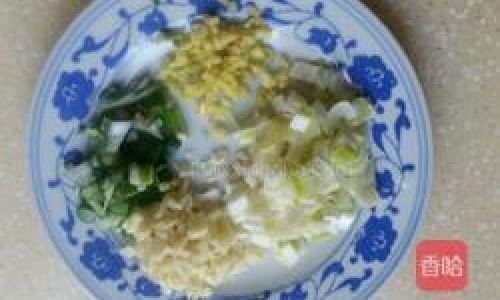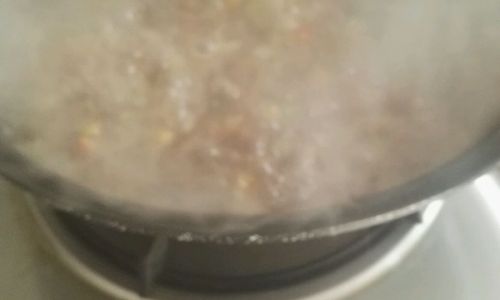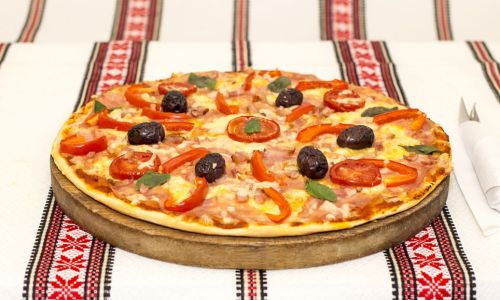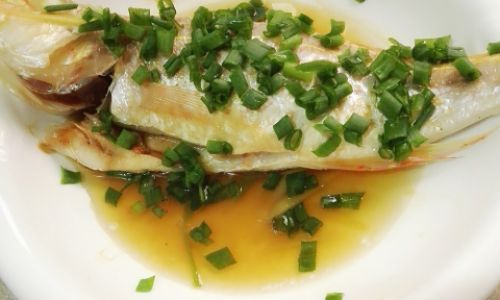Table of content
Introduction
Ice Water Hele Noodles, known as Bīngshuǐ Héluò Miàn in Chinese, are a beloved summer dish originating from northern China, particularly regions like Shanxi and Shaanxi. This refreshing meal combines hand-pulled or pressed noodles with a tangy, aromatic sauce, all chilled in ice water to create a revitalizing bite. The dish’s name derives from its unique preparation method: héluò refers to the wooden tool used to press the dough into noodles, while bīngshuǐ highlights the ice bath that gives the dish its signature crisp texture. This article will guide you through the intricate process of making Ice Water Hele Noodles, from dough preparation to sauce assembly, ensuring an authentic and delicious result.
Understanding the Cultural Significance
Hele Noodles have roots in ancient Chinese culinary traditions, dating back centuries. Originally a peasant food, the dish was crafted from locally available grains like buckwheat or millet, pressed through wooden molds to create thick, chewy noodles. Over time, it evolved into a regional specialty, celebrated for its simplicity and ability to withstand hot summers. The addition of ice water—a luxury in earlier eras—transformed it into a seasonal delight, offering respite from sweltering temperatures. Today, Ice Water Hele Noodles are enjoyed not only as a street food staple but also as a symbol of culinary craftsmanship, blending history with modern adaptability.
Gathering Ingredients and Tools
To recreate this dish authentically, you’ll need specific ingredients and tools. While modern kitchens may lack traditional héluò presses, alternatives like pasta makers or sturdy rolling pins can suffice. Below is a list of essentials:

Ingredients
-
Dough:
- 500g high-gluten flour (or a mix of wheat and buckwheat flour for traditional flavor)
- 250ml cold water (adjust for texture)
- 1 tsp salt
-
Sauce Base:
- 3 tbsp soy sauce (light or dark, depending on preference)
- 2 tbsp Chinese black vinegar (or substitute with balsamic vinegar)
- 2 tbsp sesame paste (tahini works as an alternative)
- 1 tbsp chili oil (adjust spice level to taste)
- 3 garlic cloves, minced
- 1 tbsp sugar (optional, for balance)
-
Toppings:
- 1 cucumber, julienned
- ½ cup bean sprouts, blanched
- 2 green onions, sliced
- Fresh cilantro leaves
- Toasted sesame seeds
- Optional: shredded chicken, tofu, or boiled eggs for protein
Tools
- A héluò press (or a pasta maker with thick noodle attachment)
- Large mixing bowl
- Wooden rolling pin
- Sharp knife
- Ice bath (a large bowl filled with ice cubes and cold water)
- Wok or large pot for boiling noodles
Preparing the Dough
The foundation of exceptional Hele Noodles lies in a perfectly balanced dough. Too sticky, and the noodles clump; too dry, and they crumble. Follow these steps for optimal texture:
- Combine Flour and Salt: In a large bowl, whisk 500g flour with 1 tsp salt. The salt strengthens the gluten, ensuring elasticity.
- Gradually Add Water: Create a well in the center and pour in 250ml cold water. Mix with chopsticks or your fingers until shaggy clumps form.
- Knead Thoroughly: Transfer the dough to a clean surface and knead for 8–10 minutes. The dough should be smooth, firm, and springy when pressed. If sticky, add 1 tbsp flour at a time; if dry, sprinkle 1 tsp water.
- Rest the Dough: Wrap the dough ball in plastic wrap and let it rest at room temperature for 30–45 minutes. This relaxes the gluten, making it easier to shape.
Shaping the Noodles
Traditional Hele Noodles are pressed through a wooden tool with perforations, creating thick, irregular strands. Modern adaptations use pasta makers or manual rolling. Here’s how to replicate the texture:
- Roll the Dough: Divide the rested dough into 4–6 portions. Flatten each portion with a rolling pin to a ½-inch thickness.
- Use a Pasta Maker: If using a machine, set it to the thickest setting. Feed the dough through repeatedly, reducing thickness until strands are ¼-inch wide.
- Hand-Pulling Technique (Advanced): For experienced cooks, stretch the dough into long ropes, then twist and slap against the counter to create ridges.
- Cut Noodles: If lacking specialized tools, roll the dough into a rectangle and slice into ½-inch strips with a sharp knife.
Cooking and Chilling the Noodles
The ice bath is crucial for achieving the dish’s signature “bite.” Follow these steps precisely:
- Boil Water: Fill a large pot with water and bring to a rolling boil. Add 1 tbsp salt to prevent sticking.
- Cook Noodles: Gently lower the noodles into the pot, stirring to separate. Cook for 3–5 minutes until al dente (firm but cooked through).
- Shock in Ice Bath: Immediately transfer the noodles to the ice bath using tongs or a slotted spoon. Let them chill for 2–3 minutes until completely cooled.
- Drain and Dress: Drain the noodles thoroughly, then toss with 1 tbsp sesame oil to prevent clumping.
Crafting the Sauce
The sauce is the soul of Ice Water Hele Noodles, balancing salty, sour, spicy, and nutty flavors. Here’s a classic recipe:

- Whisk Base Ingredients: In a bowl, combine soy sauce, vinegar, sesame paste, chili oil, minced garlic, and sugar (if using). Adjust ratios to taste.
- Emulsify: Gradually drizzle in 2–3 tbsp of the noodle cooking water while whisking. This creates a silky texture and mellows the flavors.
- Adjust Consistency: The sauce should coat the noodles without being overly thick. Add water or vinegar as needed.
Assembling the Dish
Layering flavors and textures is key to an authentic presentation:
- Plate the Noodles: Arrange a portion of chilled noodles in a shallow bowl.
- Drizzle Sauce: Generously spoon the sauce over the noodles, ensuring even coverage.
- Add Toppings: Garnish with cucumber, bean sprouts, green onions, cilantro, and sesame seeds. For protein, top with shredded chicken or crispy tofu.
- Serve Immediately: Ice Water Hele Noodles are best enjoyed fresh, as the noodles absorb sauce quickly.
Variations and Modern Twists
While tradition calls for simplicity, contemporary cooks often experiment:
- Gluten-Free Option: Substitute wheat flour with rice flour or a gluten-free blend. The texture will be softer but equally delicious.
- Vegan Sauce: Replace sesame paste with tahini and omit animal-based toppings. Add sautéed mushrooms for umami.
- Spicy Upgrade: Mix chili oil with Sichuan peppercorns for a numbing heat (málà flavor).
- Herb Infusions: Blend fresh herbs like basil or mint into the sauce for a refreshing twist.
Troubleshooting Common Issues
- Sticky Dough: Add 1 tbsp flour and knead until smooth. Ensure water is cold, as warm liquid activates gluten prematurely.
- Mushy Noodles: Reduce cooking time by 1–2 minutes. Immediately shock in ice water to halt cooking.
- Bland Sauce: Increase garlic or vinegar, or add a splash of rice wine for complexity.
Storing Leftovers
- Noodles: Toss with oil and store in an airtight container for up to 2 days. Refresh in boiling water before serving.
- Sauce: Keep refrigerated for 3–4 days. Whisk before using to recombine ingredients.
The Cultural Experience
Serving Ice Water Hele Noodles is as much about ritual as it is about taste. In China, the dish is often enjoyed communally, with diners customizing their bowls from shared platters of toppings. The act of pressing noodles through a héluò tool is a performance, showcasing culinary artistry. For a complete experience, pair the noodles with pickled vegetables, chilled beer, or jasmine tea.
Conclusion
Ice Water Hele Noodles embody the harmony of simplicity and craftsmanship. While the process may seem labor-intensive, each step—from kneading the dough to assembling the final bowl—pays homage to centuries of tradition. Whether you’re a seasoned cook or a curious novice, this dish offers a rewarding journey into China’s culinary heritage. So, gather your ingredients, embrace the chill, and savor the refreshing taste of summer in every bite.
Final Tip: Experimentation is encouraged! Adjust spice levels, swap proteins, or invent new toppings to make this dish your own. After all, the heart of Chinese cuisine lies in adaptation and joy.






0 comments